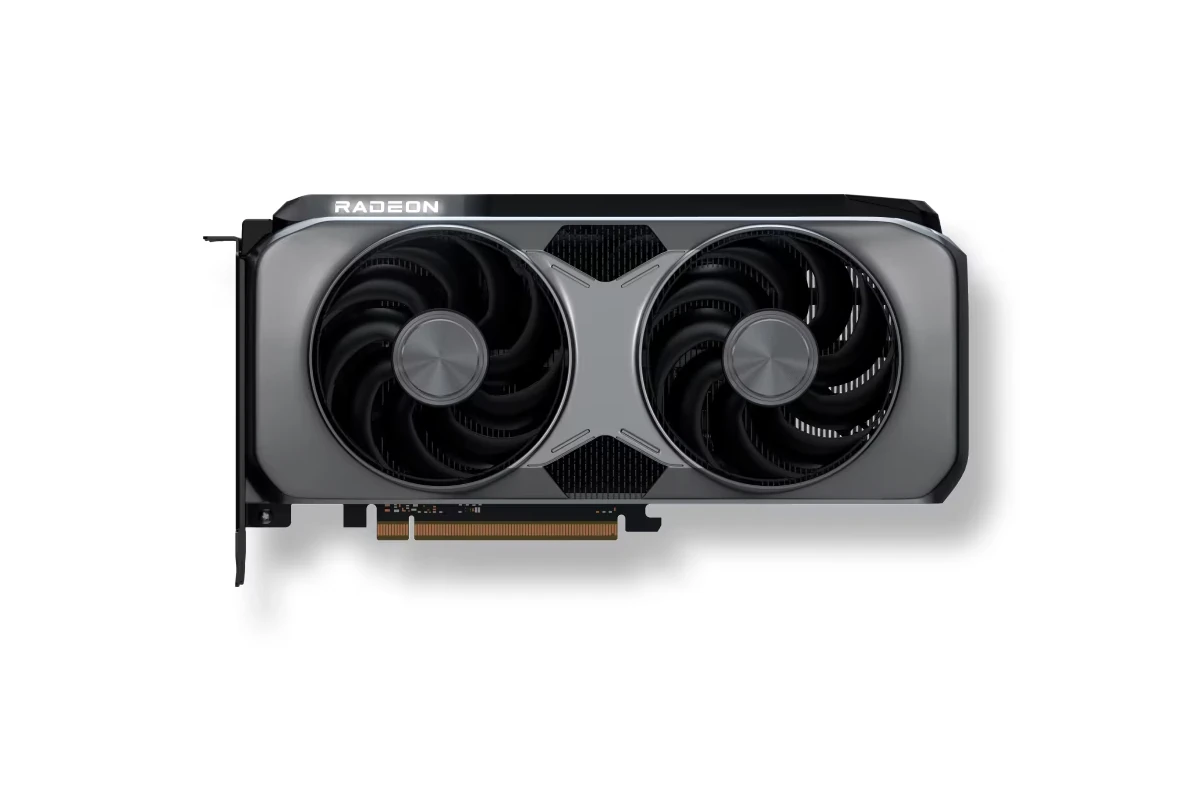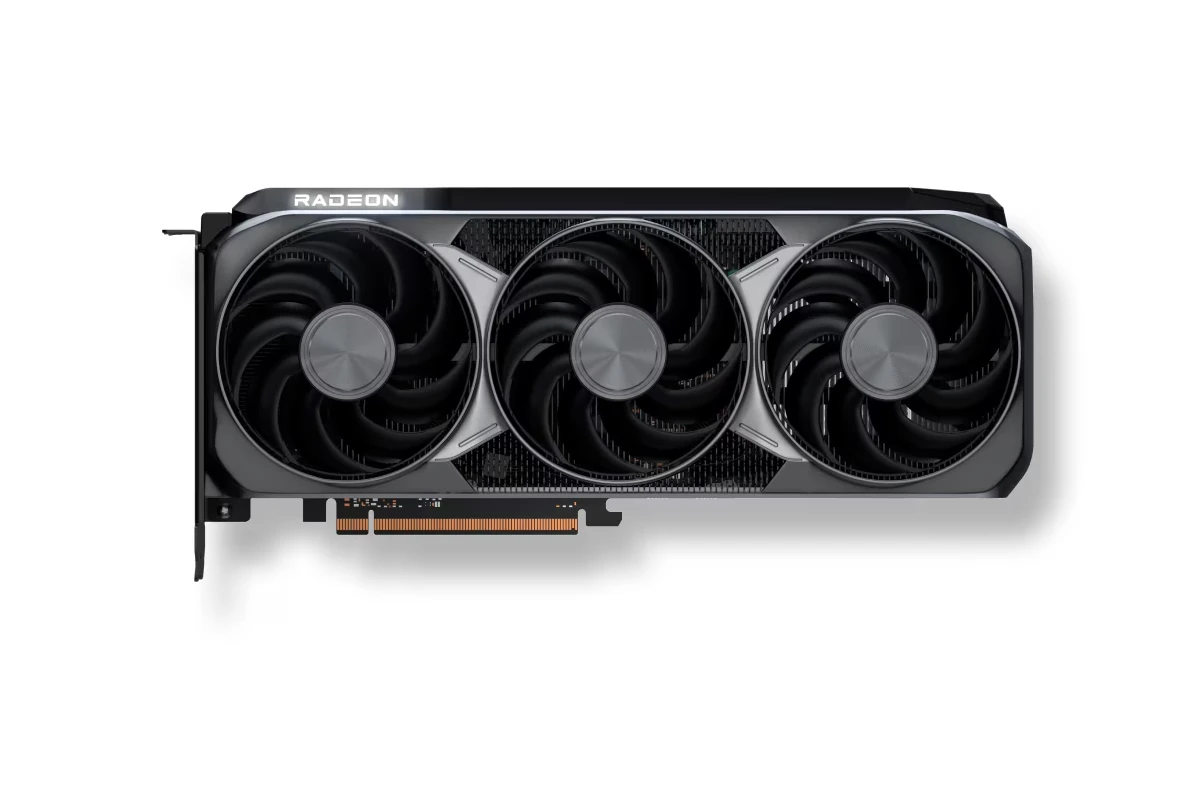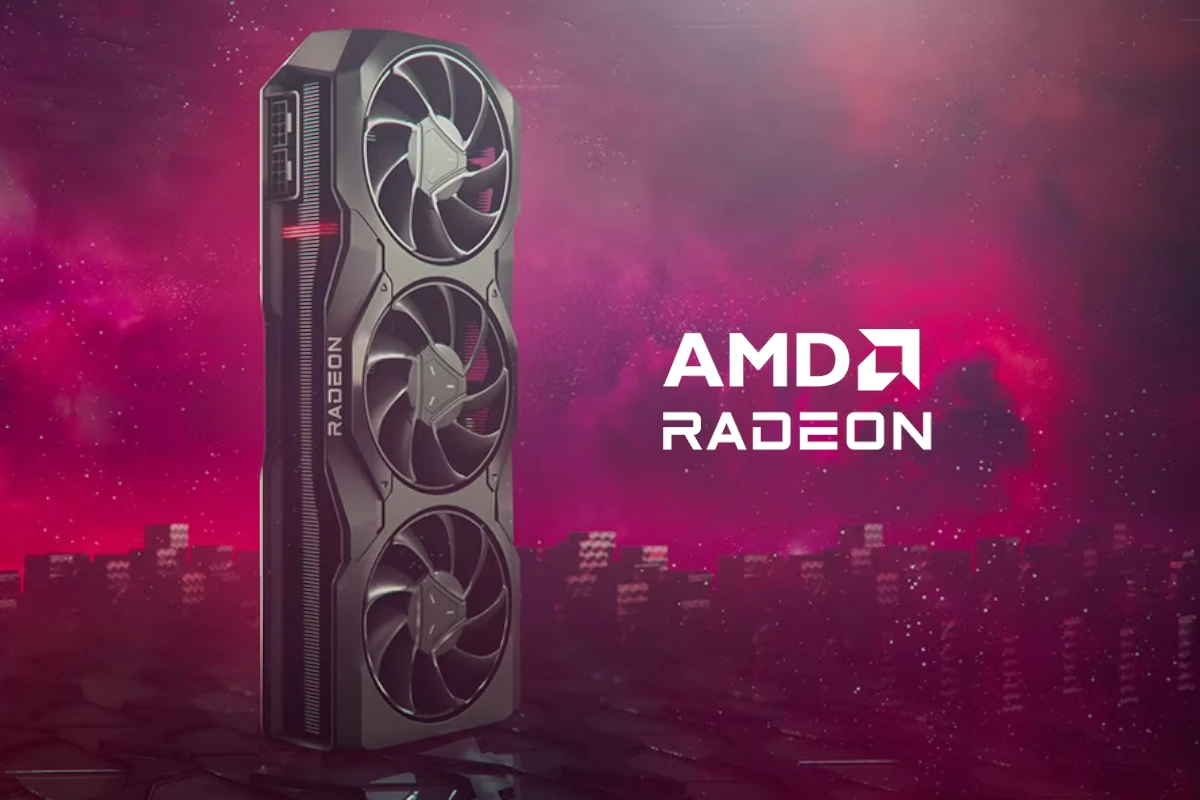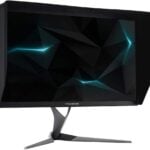As of 2025, AMD’s RDNA 4 architecture and the Radeon RX 9000 series stand at the forefront of the company’s GPU lineup, representing their most advanced and powerful offerings to date. These GPUs mark a significant leap forward in performance, efficiency, and features, firmly positioning AMD as a serious competitor in the fiercely contested graphics card market.
RDNA 4 and the Radeon RX 9000 Series

What Makes RDNA 4 and Radeon RX 9000 Series Special?
The Radeon RX 9000 series, including flagship models like the RX 9070 and RX 9070 XT, are the first GPUs to utilize AMD’s RDNA 4 architecture. This new architecture brings notable improvements over its predecessor, RDNA 3, with up to 40% higher gaming performance per compute unit. AMD has focused heavily on enhancing power efficiency and AI integration, pushing the boundaries of what mainstream and enthusiast gamers can expect from their hardware.
One of the standout features of RDNA 4 GPUs is the adoption of Unified Compute Units, which streamline processing tasks and improve performance in both traditional rasterization and ray tracing workloads. This innovation allows the RX 9000 series to deliver competitive ray tracing performance, a domain where AMD has been catching up to Nvidia’s RTX lineup. Furthermore, AMD’s new ML-powered FidelityFX Super Resolution 4 (FSR 4) technology leverages AI to upscale games with minimal performance cost, enhancing visual fidelity without sacrificing frame rates.
Market Position and Competition
AMD’s decision to skip the RX 8000 series entirely and jump straight to the RX 9000 series underscores their confidence in RDNA 4’s capabilities. The Radeon RX 9070 XT replaces the previous RX 7900 XTX, which itself was one of the fastest AMD GPUs available, offering exceptional 4K gaming performance and strong competition against Nvidia’s RTX 4000 and 5000 series GPUs.
With RDNA 4, AMD is making a strong push not only in raw performance but also in price-to-performance value, targeting both mid-range and high-end gamers. This strategy is crucial as Nvidia continues to dominate the high-end market with its RTX 5000 series, especially in ray tracing and AI-enhanced workloads. AMD’s approach with RDNA 4 is to deliver comparable gaming experiences at more accessible price points, making the RX 9000 series very attractive for gamers who want top-tier performance without breaking the bank.
Choosing the Right AMD GPU in 2025
For gamers shopping in 2025, the Radeon RX 9000 series represents the pinnacle of AMD’s GPU technology, but the best choice depends on individual needs and budgets:

- High-End Enthusiasts: The RX 9070 XT offers flagship-level performance, ideal for 4K gaming, VR, and content creation workflows that benefit from GPU acceleration.
- Mid-Range Gamers: The RX 9070 provides excellent performance for 1440p and even some 4K gaming, making it a versatile choice.
- Budget Gamers: The Radeon RX 7600 remains a standout in the budget segment, delivering solid 1080p performance with modern features like ray tracing and FSR 4 support.
Manufacturers like Sapphire and XFX continue to produce some of the best custom AMD cards, offering superior cooling solutions and factory overclocks that can squeeze extra performance out of the RX 9000 series chips.
Looking Ahead
AMD’s RDNA 4 and Radeon RX 9000 series are not just incremental updates; they represent a strategic leap that combines architectural innovation with competitive pricing and smart feature integration. As games continue to demand more from GPUs—especially with ray tracing and AI-driven enhancements—AMD’s latest GPUs are well-positioned to meet these challenges.
For gamers and creators alike, the RX 9000 series offers a compelling blend of performance, efficiency, and value, making it the best AMD GPU lineup available today.
Key Takeaways
- The Radeon RX 9070 XT is AMD’s newest flagship card while the 7900 XTX remains a powerful high-end option.
- Budget-friendly gamers should consider the RX 7600 for excellent 1080p performance at a lower price point.
- Sapphire and XFX produce some of the best-quality AMD graphics cards currently available on the market.
Overview of AMD’s Latest Graphics Card Lineup
AMD has recently unveiled its next-generation graphics cards based on the new RDNA 4 architecture. These cards bring significant improvements in performance and efficiency while targeting different segments of the gaming and content creation markets.
Introducing the Radeon RX 9070 Series
The Radeon RX 9070 series represents AMD’s latest mid-to-high tier offering in the graphics card market. This new lineup includes the standard RX 9070 and the more powerful RX 9070 XT variant. Both cards are built on the RDNA 4 architecture, offering substantial improvements over previous generations.
The RX 9070 focuses on delivering excellent 1440p gaming performance at a competitive price point. It features enhanced ray tracing capabilities compared to its predecessors, making modern lighting effects more accessible to mainstream gamers.
Meanwhile, the RX 9070 XT steps things up with additional compute units and faster memory. This card targets high-refresh 1440p gaming and entry-level 4K experiences. Early benchmarks suggest it competes favorably against similarly priced options in the market.
Both cards include dedicated AI accelerators, allowing for better performance with AI-enhanced upscaling technologies that can boost framerates without sacrificing visual quality.
Comparative Analysis: RX 9070 XT vs. Competitors
The RX 9070 XT positions itself as a strong value proposition in the current graphics card landscape. When compared to its direct predecessors in the RX 7000 series, it offers approximately 25-30% better performance in standard gaming workloads.
Key Advantages of RX 9070 XT:
- More efficient power consumption than previous generation
- Improved ray tracing performance
- Better price-to-performance ratio than premium options
Against competitors, the RX 9070 XT holds its ground particularly well in rasterization performance, though it still trails slightly in ray tracing workloads compared to equivalent offerings from other manufacturers.
For content creators, the card delivers solid performance in rendering and video editing tasks. The 16GB memory configuration of these cards (similar to the well-regarded RX 7900 GRE) provides ample headroom for complex creative workloads.
Technological Advancements in RDNA 4 Architecture
The RDNA 4 architecture represents a significant leap forward for AMD’s graphics technology. It builds upon the foundations of RDNA 3 while introducing several key improvements focused on efficiency and specialized processing.
The new architecture features redesigned compute units that deliver better performance per watt than previous generations. This results in cooler, quieter operations even under heavy gaming loads.
Ray tracing performance sees substantial gains with second-generation raytracing accelerators. These dedicated hardware components allow for more realistic lighting effects without the severe performance penalty seen in earlier implementations.
RDNA 4 Key Improvements:
- Enhanced AI accelerators for better upscaling
- Improved memory controller for better bandwidth utilization
- More efficient shader designs for better power consumption
These architectural improvements make the RX 9000 series particularly attractive for gamers seeking the best balance of performance, visual quality, and energy efficiency.
Performance, Features, and Efficiency in Gaming
AMD’s latest graphics cards deliver impressive performance while introducing new features that enhance both gaming and content creation. The RDNA 3 architecture brings significant improvements in efficiency and capabilities across various price points.
Enhancing Gaming Experience with FSR and Ray Tracing
AMD FidelityFX Super Resolution (FSR) technology has evolved substantially in recent releases. This feature boosts frame rates by rendering games at lower resolutions and then upscaling them with minimal visual quality loss. The latest FSR 3.0 includes frame generation technology that inserts AI-created frames between rendered ones, dramatically improving smoothness.
Ray tracing performance on AMD cards has improved with each generation. While Nvidia held the lead in this area for years, the gap has narrowed significantly. The RX 7000 series handles ray-traced lighting effects more efficiently than previous AMD offerings.
AMD cards also feature AMD Radeon Anti-Lag and Radeon Boost technologies. These reduce input latency and dynamically adjust resolution during fast movements to maintain consistent frame rates.
Benchmarking the RX 9070 Series: 1440p and 4K Ultra Gaming
The Radeon RX 9070 XT stands out as a performance leader in AMD’s lineup. Testing shows it consistently delivers over 60 fps in demanding titles at 4K resolution with high settings.
At 1440p resolution, the card truly shines. Benchmarks demonstrate frame rates often exceeding 100 fps in popular titles with ultra settings enabled. This makes it an excellent choice for high-refresh-rate gaming monitors.
Efficiency has improved significantly compared to previous generations. The RX 7900 GRE currently holds the title of AMD’s most efficient GPU, with the 9070 series following this trend of better performance-per-watt ratios.
Games that benefit from AMD’s architecture include:
- Open-world titles: 20-30% better performance than equivalent competitors
- DirectX 12 games: Exceptional frame rates and stability
- Vulkan-based games: Often outperforms similarly-priced alternatives
Impact of Advanced Features on Content Creation
Beyond gaming, AMD’s graphics cards offer substantial benefits for content creators. The large VRAM capacity (16GB on higher-end models) provides ample memory for video editing projects and 3D rendering.
Hardware encoding capabilities have improved substantially. The latest cards support AV1 encoding, which delivers better quality at lower bitrates compared to H.264 and H.265 codecs. This is particularly valuable for streamers and video creators.
AMD’s Radeon ProRender software leverages the GPU’s capabilities for professional rendering tasks. The rendering engine supports physically-based materials and realistic lighting simulations.
Creative professionals benefit from AMD’s color accuracy and wide color gamut support. This makes the cards suitable for photo editing, graphic design, and video color grading where precise color reproduction is essential.
Frequently Asked Questions
AMD graphics cards continue to evolve with impressive performance improvements and competitive pricing. The latest models offer enhanced features for gamers across various budget ranges.
What are the current top-performing AMD GPUs for gaming?
The Radeon RX 7900 XTX currently stands as AMD’s flagship graphics card. This powerful GPU features 96 Compute Units with 64 Streaming Multiprocessors each, making it ideal for demanding 4K gaming.
The RX 7900 XT and RX 7800 XT follow closely behind, offering excellent performance for high-resolution gaming while requiring less power than previous generations.
For serious gamers who want top-tier AMD performance without compromise, these cards represent the peak of what AMD currently offers in the consumer market.
How does the AMD Radeon RX 7900 XTX compare to its predecessors?
The RX 7900 XTX delivers significant improvements over previous generations. With its enhanced architecture, it provides better frame rates and smoother gameplay in demanding titles.
The card features more Compute Units than its predecessors and utilizes AMD’s latest technologies for ray tracing and upscaling. These improvements translate to better gaming experiences at higher resolutions.
Power efficiency has also improved, allowing for better performance per watt compared to earlier Radeon offerings.
What are the price-to-performance considerations when buying the latest AMD graphics card?
AMD graphics cards typically offer strong value propositions compared to their competitors. The high-end 7900 XTX comes with premium pricing but delivers performance that justifies the cost for enthusiasts.
Mid-range options like the 7800 XT provide excellent price-to-performance ratios for gamers seeking balance between capability and cost. These cards handle most modern games at high settings without breaking the bank.
Entry-level cards offer surprisingly capable performance for their price points, making AMD a solid choice across various budgets.
How do recent AMD graphics card releases perform in benchmark tests?
Recent AMD cards show competitive performance in benchmarks. The 7900 series consistently delivers strong results in both synthetic tests and real-world gaming scenarios.
Benchmarks reveal that AMD cards excel particularly in traditional rasterization performance. While Nvidia often leads in ray tracing benchmarks, AMD continues to narrow this gap with each generation.
Efficiency benchmarks show improvements, though Nvidia’s RTX 3000 and 4000 series cards still maintain an edge in power efficiency compared to AMD’s best offerings like the RX 7900 XT.
What is the most cost-effective AMD graphics card currently available for high-end gaming?
The Radeon RX 7800 XT emerges as the most cost-effective high-end AMD option. It delivers excellent performance for 1440p gaming and can handle 4K in many titles while costing significantly less than the flagship models.
This card strikes an ideal balance between power and price. It provides much of the performance of higher-tier cards without the premium price tag.
For gamers seeking high-end experiences without spending on the absolute top model, the 7800 XT represents AMD’s sweet spot in the current lineup.
Which AMD GPU offers the best value for gamers on a budget?
The Radeon RX 7600 stands out as the best value option for budget-conscious gamers. This card delivers strong 1080p gaming performance at a much more accessible price point.
Previous generation cards like the RX 6600 also remain excellent choices for budget builds. These cards often receive price reductions when newer models launch, creating opportunities for value-seeking gamers.
Budget options still provide good experiences for esports titles and popular games at medium to high settings, making AMD a strong contender in the entry-level and mid-range segments.







